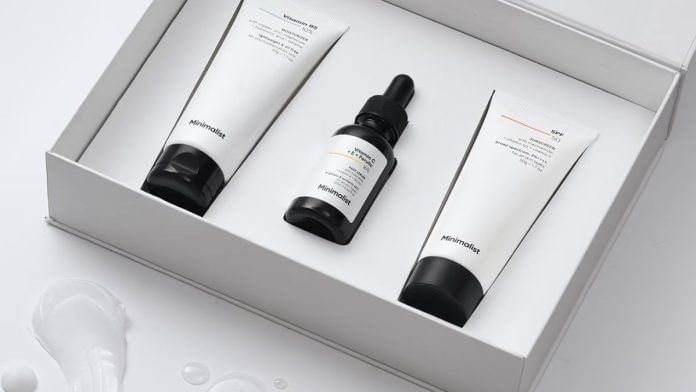My patients are often looking for the next best skincare product. And a question they often have is, “Which country makes the best skincare for Indian skin?”
The honest answer remains that no single country dominates, because “best” hinges on your specific concerns (melasma, acne, dehydration, photo-ageing), skin tolerance, climate adaptation, and access to evidence-based actives.
Indian skin (mostly Fitzpatrick types IV-VI) is pigmented, photoreactive, and prone to post-inflammatory hyperpigmentation (PIH). So, formulations must prioritise barrier support, gentle brightening, and robust photo protection while minimising irritation.
Let’s take a look at skincare products based on their country of manufacture.
1. South Korea
K-beauty continues to lead in lightweight textures, soothing botanicals (centella, mugwort, green tea), and humectant-heavy hydration that performs beautifully in India’s humid, polluted cities. Many products are now explicitly reformulated or launched for Indian concerns, such as adding higher amounts of niacinamide, additional pollution protection, and matte finish.
Widely available Korean brands in India include COSRX, Beauty of Joseon, Laneige, Dr.Jart+, Round Lab, iUNIK, Some By Mi, and HaruHaru Wonder. They’re available on Nykaa, Tira, and Amazon.
Best for: Daily gentle routines, glass-skin hydration, and early pigmentation prevention in younger patients.
Caveat: Pure “original” Korean formulations can sometimes feel too dewy in peak Indian summer. It’s better to look for age-specific variants that work for Indian skin.
2. France/Europe
La Roche-Posay, Bioderma, Avène, Vichy, Uriage—these remain my most-prescribed international lines for Indian patients with rosacea-like sensitivity, perioral dermatitis, or steroid-damaged skin.
European mineral/hybrid sunscreens (Anthelios UVMune 400, Photoderm) are still among the most elegant, photostable, and non-irritating on pigmented skin. More tinted and ultra-high PPD (Persistent Pigment Darkening) options are tailored for deeper tones.
Best for: Reactive skin, post-procedure care, and reliable daily sunscreens.
3. Japan
Brands like Hada Labo, Muji, Curel, and new entrants such as Tatcha, Shiseido’s d program excel at fragrance-free, ceramide-rich, low-irritant formulas that reduce rebound pigmentation risk.
Best for: Patients who have dryness and PIH concerns.
4. United States
SkinCeuticals, Paula’s Choice, and Obagi still dominate for stable L-ascorbic acid, high-strength retinoids, and tranexamic acid serums.
Best for: Stubborn melasma, acne scars, and photo-ageing—but always buffer or start low on Indian skin to avoid irritation/PIH.
5. India
The biggest shift since 2023–2024 is the maturity of Indian brands. Many are now dermatologist-formulated, tested on Indian skin tones and climates, and transparent. And many combine global actives with Ayurvedic botanicals. They often outperform imported products in India’s humid heat and pollution.
Here are the Indian brands I prescribe most in 2025:
- Minimalist: Transparent, high-percentage actives (10-20 per cent niacinamide, 15 per cent azelaic, tranexamic, advanced sunscreens)
- The Derma Co./Fixderma: Affordable, dermatologist-created; excellent kojic, azelaic, and salicylic ranges
- Dot & Key: Barrier-focused, lightweight, pollution-shield formulae
- Plum, Dr. Sheth’s, Re’equil, Foxtale: Great for Indian oily-combination skin.
Hybrid Korean-Indian brands (D’you, Quench Botanics, Put Simply) are manufactured in Korea but formulated specifically for Indian humidity, pollution, and melanin-rich skin.
Key ingredients that matter most for Indian skin:
- Niacinamide (5-10 per cent)
- Azelaic acid (10-20 per cent)
- Tranexamic acid (3-5 per cent topical)
- Gentle retinoids (adapalene, retinal, low-dose tretinoin)
- Photostable broad-spectrum sunscreens (PA++++, PPD >16, preferably tinted/hybrid)
Bottom line
The country that makes the best skincare for Indian skin is increasingly India itself. Homegrown brands now match (and often beat) international ones on efficacy, affordability, and suitability to the Indian climate.
The key thing to also remember is that the country of manufacture matters far less than:
- Ingredient quality and percentage
- Formulation stability in heat/humidity
- Patch-testing and gradual introduction
- Daily broad-spectrum sunscreen (non-negotiable to prevent pigment relapse)
Always consult your dermatologist before adding strong actives. And remember: consistency and sun protection beat any single country’s products every time.
Dr Deepali Bhardwaj is a Consultant Dermatologist, Max Hospital, Saket. She is also an anti-allergy specialist, laser surgeon and internationally trained aesthetician. She tweets @dermatdoc. Views are personal.
(Edited by Prasanna Bachchhav)






